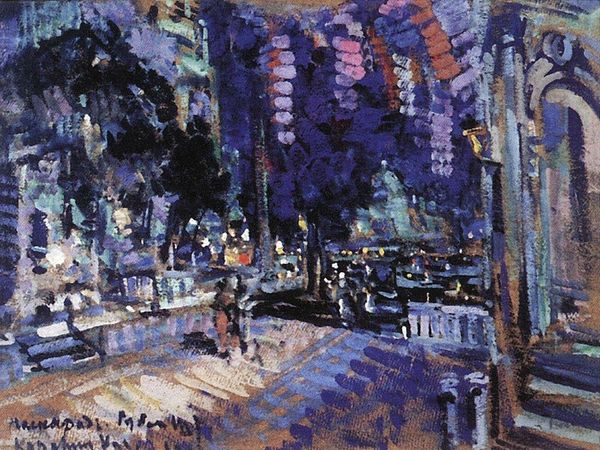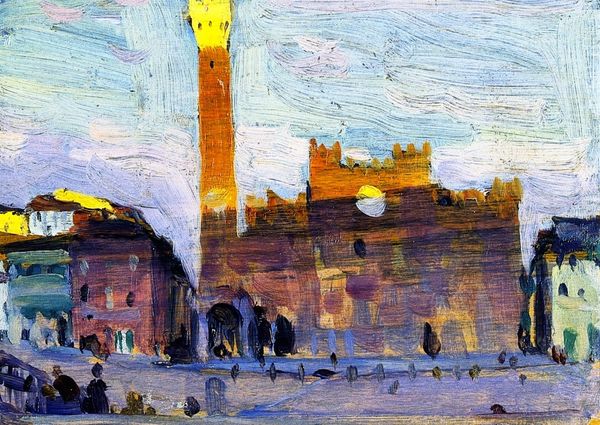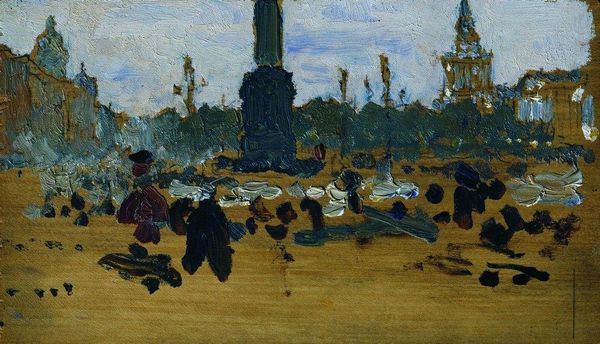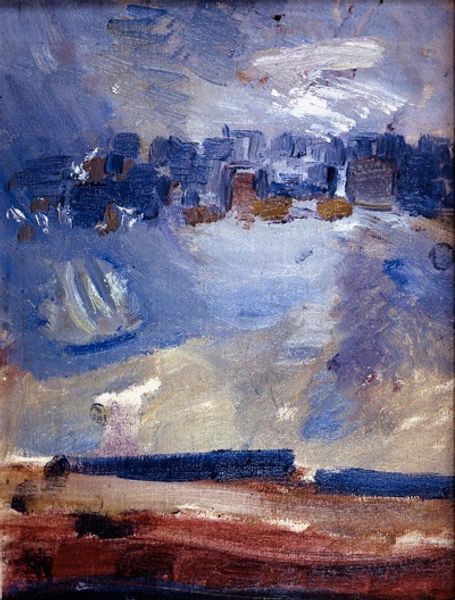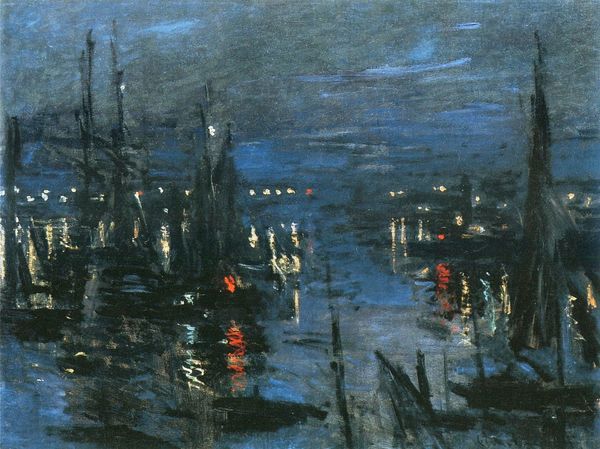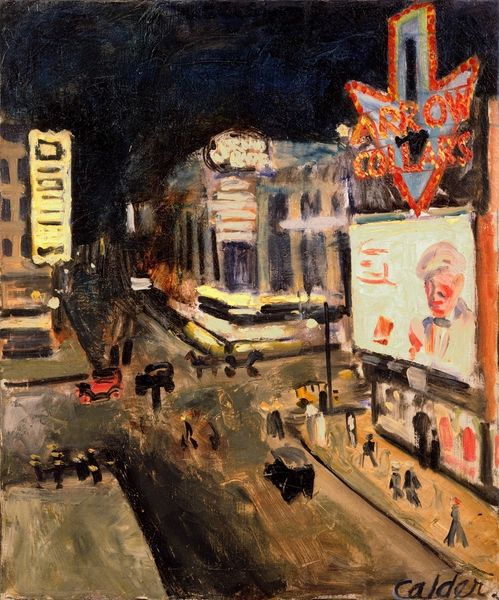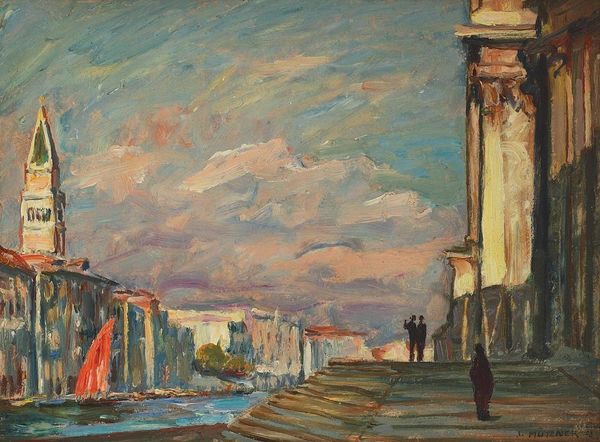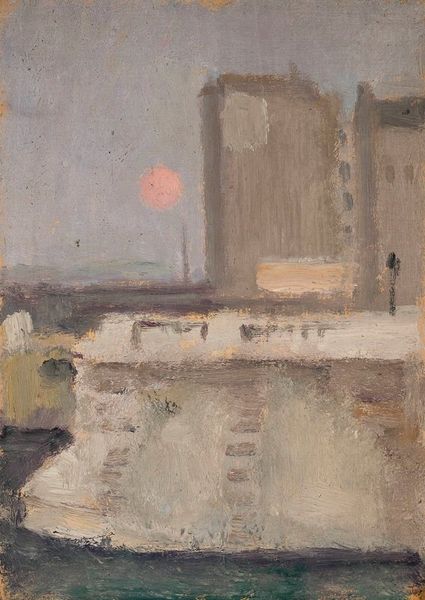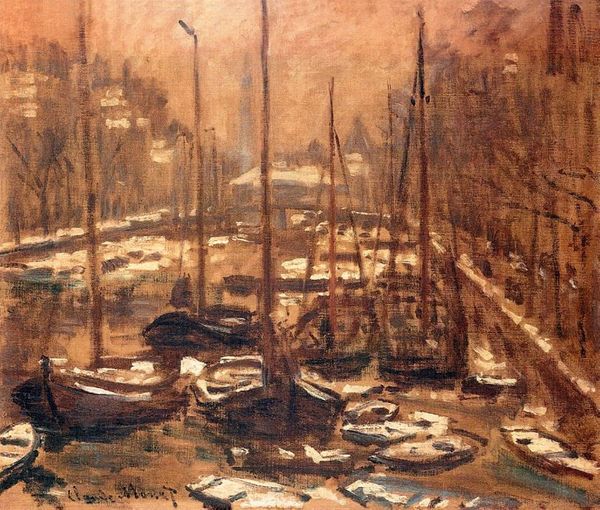
Dimensions: 31.12 x 24.77 cm
Copyright: Public domain
Curator: Welcome to this highlight of Maurice Prendergast’s “Paris,” an oil-on-canvas artwork from 1907. It offers a compelling view of the cityscape, captured in his signature impressionistic style. Editor: Immediately, I notice the strong sense of place, but more specifically, the evidence of labor and industry here. The palette leans towards the blues of the river reflecting artificial light, all anchored by that smokestack. The impression is less "romantic Paris" and more of a city humming with activity, maybe even working-class struggle. Curator: I find that so insightful. Beyond the impressionistic rendering of the light, Prendergast uses the city itself, and I think in ways similar to Baudelaire, as a mirror to modernity’s promises and pitfalls, capturing fleeting moments and experiences of the Parisian flâneur. It presents itself as a painting about experience—how one navigates urban life with an awakened consciousness. Editor: It’s striking that you bring up Baudelaire. Prendergast clearly captures the essence of this moment through materiality itself, each brushstroke a deliberate choice in the construction of his impression of this city. Look at how the paint reflects that industrial presence: everything is tied back to material production. Even these women walking on the street, are they leisure consumers, or urban labourers? Curator: And speaking of these people – their depictions are fascinating when situated in discussions around spectatorship, agency and class. Were these working women excluded from leisurely flânerie? Are we spectators ourselves, reflecting and projecting our own perspectives onto the urban tapestry before us? Editor: Right, it's not just about the high-art impressionism, it's also about the materiality, what these paint daubs construct: representations of real women on streets transformed by capitalism. What story do they tell us about who had the right to leisure or pleasure, in a historical society still defined by rigid labor structures? Curator: Thinking along those lines, Prendergast is subtly exploring issues of visibility and representation – what are we *really* seeing in this picture of Paris, who is *allowed* to take up space, and on what terms? How can we move beyond conventional, singular narratives of gender, class and social norms to grasp this? Editor: And the fact that we are having this conversation now—that is precisely the legacy and tension held in the layers of impasto! Each tiny smear of paint a small representation of power structures that have continued to evolve to this day. Thank you for illuminating these points.
Comments
No comments
Be the first to comment and join the conversation on the ultimate creative platform.
